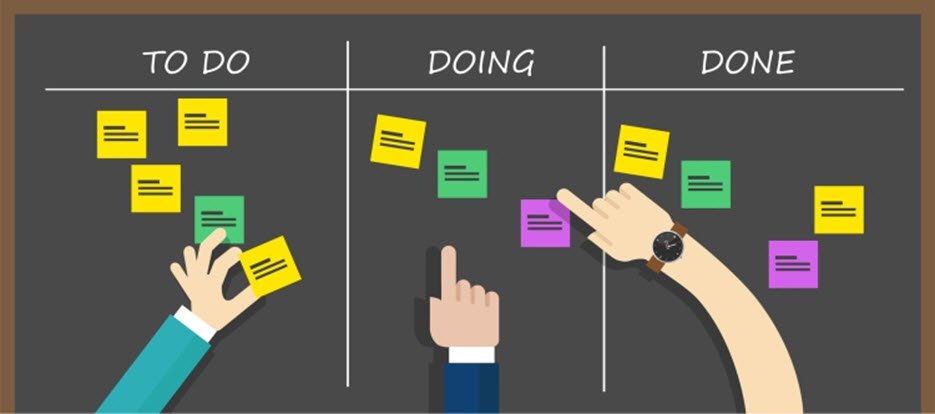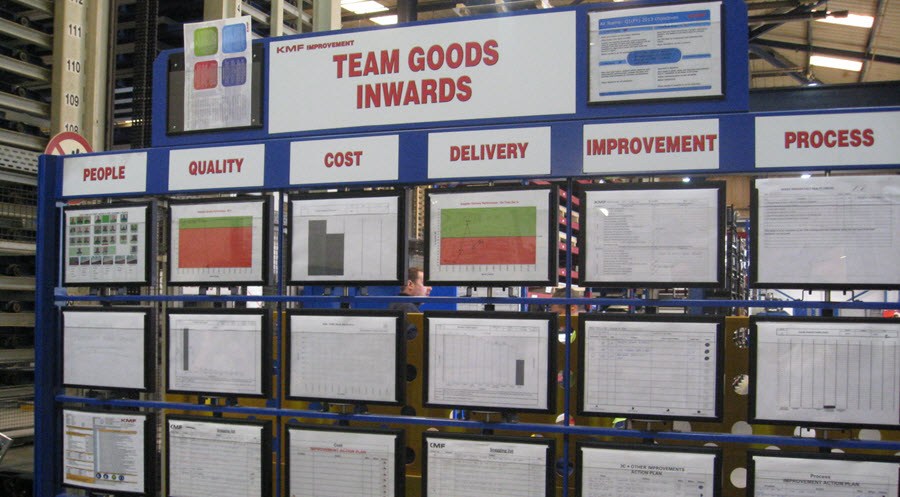Visual Management Systems also known as VMS is basically a technique executed to share data and information with the help of visual signals instead of texts or verbal instructions. The system is designed to enable quick and better comprehension of the data by everyone to increase clarity and efficiency in the organization.

The visual signals can come in variations from different cards, tapes, to colored lights such as traffic signals. However, visual management systems are actually the visual aid to manage the organization’s functions and operations to some extent. It includes project status, performance tracking, and schedule.
It is a way of conveying your message to a broad range of audience in a transparent way. It also puts the information and data in concise way in front of those officials who can take the necessary or instant actions.
Understand the Approach of Visual Management Systems
To understand the VMS, you are required to understand the approach of it. The VMS approach is to enable these things in the systems:
- To remain clear about different tasks, information, and data to accomplish them.
- To avoid different problems and issues instead of only responding to them.
- To keep an eye on the status and performance of all the process.
- To expose weak points or things that has room for improvement.
- To take the necessary and appropriate actions.
Making Your Visual Management Systems Effective
To make your visual management systems effective, the VMS requires being incorporated into everlasting improvement culture with the only objective being able to manage every process in real-time. Undoubtedly, it takes time, persistence and efforts to become a fundamental part of the organization before utilizing the entire benefits of Visual Management Systems.
The Benefit of Visual Management Systems
If visual management systems are truly executed then the organizations will get these benefits.
The stakeholders will be capable of the following
- Setting up an administrative structure to show them all the statuses and performances of the ongoing projects with the help of just a glance.
- Gaining transparency of the procedure and clarity of the purpose.
- Managing team activities effectively and efficiently.
- Understanding the structure of visual management board.
- Team members will engage more in the course of action.
- They will get motivation through the visual method of functioning.
- Members of the team will get the latest information.
- Team meetings will become more stimulating and productive.
An Overall Great Thing for Organizations
The teams can “Go to Gemba” which is go, look, and see where things are taking place. It provides greater transparency, immediate access to authoritative information and data, project status with just a glance, so everyone knows how the things are progressing.
Furthermore, the top level executives will show confidence in team leaders because they will be fully aware of the work and they will be able to take decisions at the right moment with the help of an transparent and open structure.
In addition, organizations where measuring and monitoring is on-going then those organizations have better chance to grow and to prevent problems and issues rather than only reacting to them.
Visual Management Boards
The goal is to have a display that quickly shows the status of current tasks visually. They are usually depicted through whiteboards, with information updated through hand or use of color coding.
- Visual Management Boards indicates the process status.
- Visual Management Boards direct the leadership towards the paces that require
- Visual Management Boards indicate about the actions or counter threats that are currently in process.
- Visual Management Boards show both normal and abnormal, or what is right and wrong.
Gemba Walk in Visual Management Systems
The goal is to understand the value stream mapping and its problems. It is designed to let leaders do the depicted things.
- It allows leaders to identify the existing safety hazards.
- It allows leaders to ask about the exercised standards.
- It allows leaders to observe equipment and machinery conditions.
- It allows leaders to gain information about the status of the work.
- It allows leaders to develop a relationship with employees.
Conclusion
Even though communication is necessary to keep people and projects moving forward, we should not forget the simplicity and effectiveness of these tools. A shared understanding of certain documents is better than proper reports with lack of understanding.






